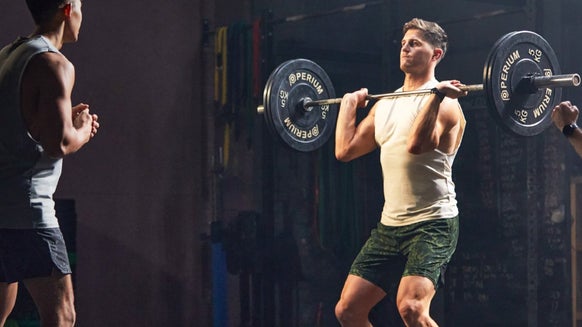
Mobility is a vital part of our general health and fitness. It’s often neglected because many people are unaware of its importance. Mobility specifically refers to the joints and their ability to move freely across different planes of movement. A greater range of movement at the joint means you are more mobile, and a more limited range of movement means you are less mobile. Incorporating the right stretches into your workout could help improve your mobility and joint health.
What is stretching?
Stretching is the process of improving flexibility and mobility. Limited range of movement at a joint often occurs because of the length and tightness of the muscles surrounding the joint. Stretching uses different methods to acutely or chronically increase the length and flexibility of these surrounding muscles to increase the range of movement (ie greater mobility).
What does stretching do?
The purpose of stretching is to improve the range of motion in the joints and muscles. The effects can either be acute (ie temporary, for a particular exercise) or chronic (ie to permanently change the composition of the muscle over time).
Types of stretching
Static Stretching
This method of stretching involves taking the muscle to its maximum length and the joint to its furthest range of movement. Static stretches should be held for 15-30 seconds for best results. You can hold them for longer, but it’ll have a limited benefit. It’s likely you’ll feel a degree of discomfort during stretching — this is normal, but don’t push too hard as it may result in injury.
This type of stretching is mostly used to increase muscle length over a long period of time, leading to a greater range of movement and more-mobile surrounding joints.
Dynamic Stretching
This type of stretching involves dynamically moving a limb through its full range of movement, taking joints to their end ranges. It requires dynamically loading the muscles surrounding the joint, like during actual sports or exercise, making them a great choice for a warm-up.
While the goal is to get the joints and muscles to their end range limit, you should perform them with a degree of control to reduce the risk of injury.
PNF Stretching
PNF stands for proprioceptive neuromuscular facilitation. It's a form of stretching used to acutely increase flexibility and mobility.
PNF stretching involves combination of contracting and relaxing muscles to push the joint into a deeper range of movement. This form of stretching can immediately increase flexibility in muscles around a joint.
Benefits of stretching for lifting weights
Stretching for weight lifting can help to increase the mobility at any given joint, which in turn can help to reduce the risk of injury as muscles will not be loaded beyond their capacity at any point of their range of movement.
Increased mobility can help increase range of movement, which may help you to build more muscle in the long term.
Benefits of stretching for cardio
Like resistance training, improved mobility can help to reduce the risk of injury in activities such as running, cycling or high intensity interval training (HIIT). When a muscle is loaded rapidly at its end of range of movement, it’s highly susceptible to injury. By stretching and improving mobility, you can make the muscles better able to withstand loading and less at risk of injury.
What is mobility?
Mobility refers specifically to how well a joint can move through its full range of movement. As previously outlined, the mobility of a joint can be improved by stretching the muscles surrounding a joint. If muscles are tight, then mobility can be restricted.
Mobility is also significantly influenced by blood flow, production of synovial fluid (the substance responsible for lubricating joints) and temperature (of both the surrounding muscles and the joint itself). An effective warm-up will increase all these things, resulting in an acute improvement in mobility. This is why mobility drills are often included in a warm-up and are especially useful for those with more restricted movement.
Benefits of mobility
Improved mobility can affect performance on joints in different ways. For instance, greater ankle mobility allows for a greater degree in flexion at the ankle, enabling you to squat deeper. Deeper squats mean the quads and glutes move through a greater range of movement, leading to a more effective workout.
Improved shoulder mobility can help with sport-specific movements such as throwing, while also reducing the risk of injury as the joint can move safely through a greater range of movement.
It can also help with weightlifting movements, such as the snatch, which requires a high degree of mobility and security to hold the bar overhead. Improvements in mobility at the shoulder mean that the joint is less likely to be loaded in a compromised position, thus mitigating the risk of injury.
How to improve mobility
Warm-Up Properly
An effective warm-up will result in increased blood flow to joints and muscles, increased production in synovial fluid (the substance responsible for lubricating joints) and increased muscle and joint temperature. Together, these factors contribute to improved flexibility of soft tissue structures, allowing for greater ranges of movement to be achieved.
Utilise Different Stretching Methods
If the goal is to acutely increase a joint’s range of movement, then dynamic stretching is your best choice. PNF and static stretching are better options for lengthening the muscle on a more long-term basis, resulting in longer-lasting increases in mobility.
Perform Resistance Training
While this may seem counterintuitive (as DOMS can lead to stiffness), resistance training increases synovial fluid production at joints, along with loading the muscle and joint through their full ranges of movement. Resistance training for improved mobility is most effective when combined with methods of stretching.
How to improve mobility alongside your training routine
It may seem obvious, but simply allowing for 5-10 minutes as part of your warm-up would be more than enough to begin improving joint mobility. Implement some stretching and mobility drills that take your joints through to their end ranges of motion, and you’ll be well on your way!
How to stretch to improve mobility
Beyond methods mentioned above, this should be seen as a long-term endeavour. You won’t improve your mobility by any substantial amount overnight. To achieve the adaptations that you want, you’ll need to ensure you stick to your routine religiously.
Stretching can be performed on any muscle group to help improve the mobility of surrounding joints. For example, improvements in shoulder mobility would be achieved by properly stretching the muscles that handle the movements at the joint.
Take home message
Stretching and mobility drills may not be something that you consider to be an important element in your training, but they should be a staple in your routine, as they can be a massive boost to your health and performance.




